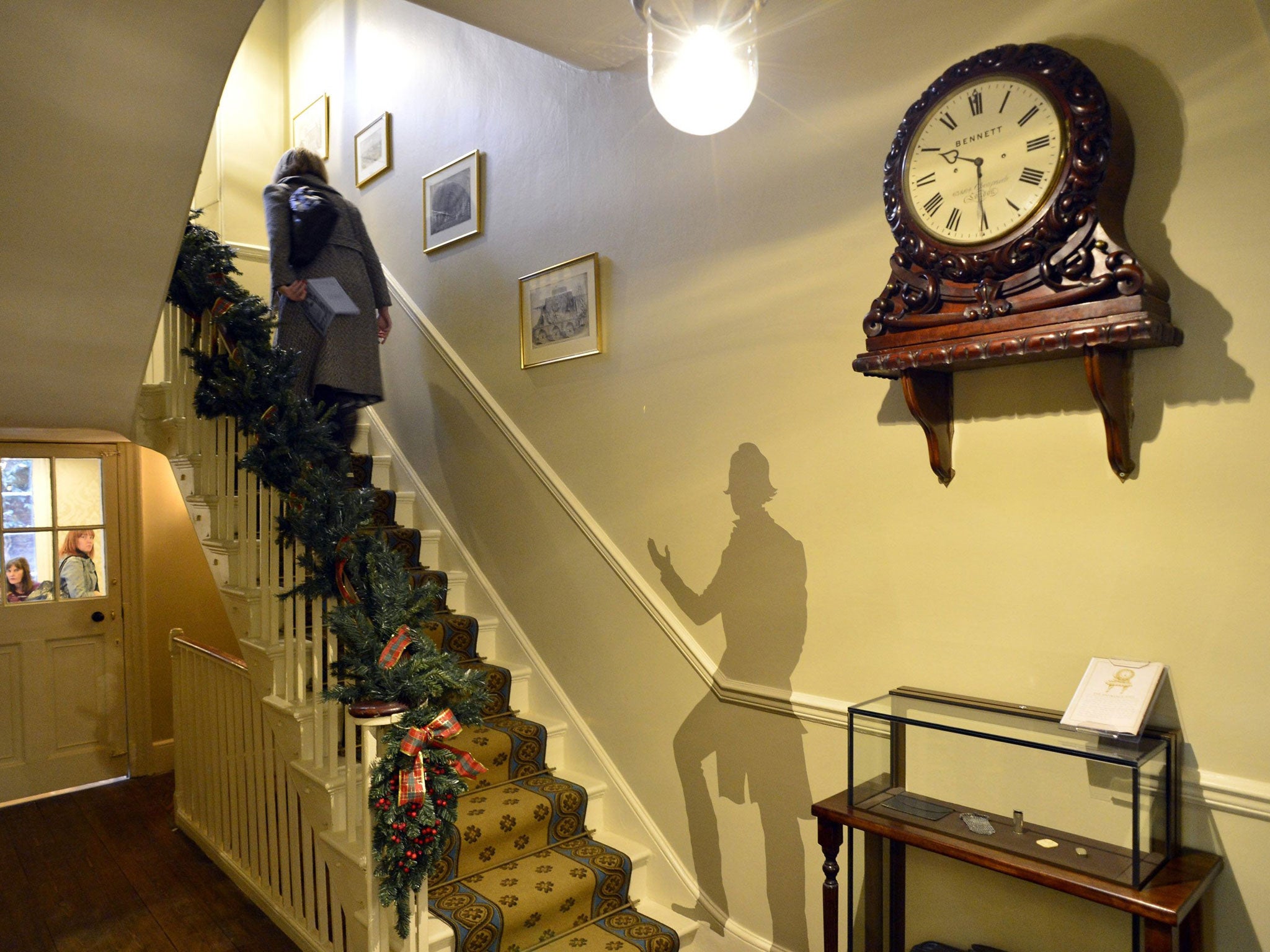IoS exhibition review: Charles Dickens Museum, Doughty Street, London
A tale of two houses, neither one bleak

Your support helps us to tell the story
From reproductive rights to climate change to Big Tech, The Independent is on the ground when the story is developing. Whether it's investigating the financials of Elon Musk's pro-Trump PAC or producing our latest documentary, 'The A Word', which shines a light on the American women fighting for reproductive rights, we know how important it is to parse out the facts from the messaging.
At such a critical moment in US history, we need reporters on the ground. Your donation allows us to keep sending journalists to speak to both sides of the story.
The Independent is trusted by Americans across the entire political spectrum. And unlike many other quality news outlets, we choose not to lock Americans out of our reporting and analysis with paywalls. We believe quality journalism should be available to everyone, paid for by those who can afford it.
Your support makes all the difference.Given the number of times Charles Dickens moved house, it's remarkable that only one of those houses still stands. No 48 Doughty Street is where the 25-year-old made his first exuberant entrance into the life of a gentleman of letters. Emboldened by the success of initial instalments of The Pickwick Papers, he took a three-year lease at £80 a year, and moved in in March 1837, installing along with his wife and new baby his wife's sister, and his own brother, plus the usual domestic staff.
That the clan decamped early owes much to the fast succession of two births, one miscarriage, and the sudden death of Dickens's beloved 17-year-old sister-in-law. These events also dealt a blow to the future heritage industry since very little of the author's fingerprint remains on No 48, reopened to the public after refurbishment last Monday, within a squeak of the end of the Dickens bicentenary.
The house has been a museum since the 1930s, but the recent incorporation of No 49 next door, housing such necessities as giftshop, cafe and loos, as well as a nicely provisioned reading room and a lift, means No 48 could revert to its original use. The downstairs dining room, its walls a startling blue, has its table laid expectantly, each place set with a plate bearing the image of one of Dickens's friends. A set of silver carving rests are a reminder of the author's reputed skill for "neat and rapid" dispatching of a roast. Entertainment he provided himself, regaling guests with music-hall ditties such as "The Dog's Meat Man", a convivial and unusually pro-active host.
Also on the ground floor, the morning room now houses images of Catherine, the young Mrs Dickens, later to be treated rather shabbily. One portrait shows her fingering a tapestry overmantle she was stitching, and it's satisfying to see an identical item in the room.
At the prompting of the guiding pamphlet, designed to resemble one of Dickens' fiction instalments, you descend to the restored kitchen and scullery. These are suspiciously bare as well as clean – surely the Dickens cuisine required more kit than this? One point of fascination, however, is a "meat hastener", a curved metal fireguard within which the roasting joint would have been hung from a hook and placed before an open fire.
Better still is the nugget that early Victorian kitchens – dark, fetid and bug-ridden – often kept a hedgehog to keep down cockroaches. Hard to imagine on this spotless terracotta floor.
Speaking of darkness: if you plan to visit on a winter afternoon, take a torch. Candlelight may be authentic, but it renders the guidebook, not to mention documents written in blobby, iron-gall ink, impossible to decipher. The picture is incomplete without sight of the letter, written to a friend by Dickens several houses later, when he built a wall across their bedroom, to shut out his wife.
Open Mon-Sun, including 25 Dec, 10am to 5pm (020-7405 2127)
Join our commenting forum
Join thought-provoking conversations, follow other Independent readers and see their replies
Comments